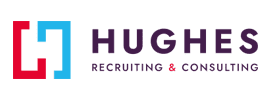Enhance Employee Potential Through Targeted Coaching
We all need someone to guide us through life sometimes. There are people who have already been through the challenges we’re facing and can offer valuable advice to help us succeed and avoid costly mistakes.
Similarly, your employees need guidance at every stage of their careers. You might think hiring the best candidates is enough, but employees need continuous investment in their growth to keep performing well. Developing a well-structured coaching program in the workplace is one of the most effective ways to contribute to their professional development.
What is Workplace Coaching?
Workplace coaching involves helping staff members improve their performance through professional guidance. For this to happen, there must be a coach, ideally an experienced one, and a coachee, the employee who requires instruction. Together, they form a supportive professional relationship to unlock the coachee’s potential by focusing on different aspects of work.
Let’s say an employee needs guidance on improving productivity or communication skills. The organization arranges for an experienced person to help them reach those goals. This process, whether through one-on-one sessions or systemic feedback mechanisms, is what we call workplace coaching.
Employee Development: What You Need for Successful Coaching in the Workplace
Every process needs key tactics to be successful. For the “employee coaching” to be effective, there should be:
- Personalization: Tailoring the coaching process to fit the unique strengths, weaknesses, and aspirations of each employee.
- Collaboration: Creating a partnership between the coach and the employee, where both parties actively participate in the development process.
- Goal-Oriented: Setting clear, achievable goals that align with both the employee’s career aspirations and the organization’s objectives.
- Continuous Feedback: Providing regular, constructive feedback to help team members understand their progress and areas for improvement.
How Do You Establish a Workplace Coaching Program?
Here are ten steps you’ll need to take to implement an effective coaching program in the workplace:
1. Establish Clear Coaching Objectives
Before starting a coaching action plan, it’s essential to define what you want to achieve. Objectives might include improving specific skills, increasing overall job performance, or preparing employees for leadership roles. Clear objectives provide direction for the training process and help measure its success.
2. Identify Suitable Coachees
Not every employee may need or want coaching. It’s important to identify those who would benefit the most. These might include new hires, employees taking on new roles, those identified as high-potential, or anyone who has expressed a desire for professional development.
3. Select Qualified Workplace Coaches
Choosing the right coach is critical. Coaches can be internal managers, experienced employees, or external professionals. They should have the necessary leadership coaching skills, such as mentorship spirit, active listening, and the ability to communicate effectively. A good coach is a team leader who is patient, empathetic, and genuinely interested in helping others succeed.
4. Develop a Coaching Plan
A coaching plan outlines the actionable items, ways of execution, and duration of the workplace coaching relationship. It should include:
- Goals: Specific, measurable, achievable, relevant, and time-bound (SMART) goals.
- Methods: The techniques and activities used to implement the goals, such as one-on-one meetings, workshops, or on-the-job training.
- Timeline: A schedule for coaching sessions and a timeframe for achieving the goals.
5. Conduct Regular Coaching Sessions
Consistency is key in coaching. Regular sessions help maintain momentum and ensure continuous progress. During these sessions, the coach and the coachee should:
- Review Progress: Discuss what has been accomplished since the last session.
- Provide Feedback: Offer constructive feedback on the employee’s performance.
- Address Challenges: Identify any obstacles the employee is facing and brainstorm solutions.
- Set New Goals: Adjust existing goals or set new ones as necessary.
6. Foster Open Communication
Effective coaching greatly relies on open, honest communication. Employees should feel comfortable discussing their challenges and successes. Coaches should listen actively, ask open-ended questions, and provide clear, actionable feedback.
7. Utilize Various Coaching Techniques
Different employees may respond to different coaching styles, such as:
- Directive Coaching: The coach provides specific instructions and solutions.
- Non-directive Coaching: The coach asks questions to help the employees find their own solutions.
- Blended Coaching: A combination of directive and non-directive approaches tailored to the employee’s needs.
8. Provide Coaching Resources and Support
Ensure that employees have access to the resources they need to succeed for further skill development. This might include training materials, access to online courses, or opportunities to attend workshops and conferences. Support from peers and managers is also vital.
9. Monitor and Evaluate Coaching Progress
Regularly assess the effectiveness of the program. This can be done through:
- Feedback: Gather feedback from both the coach and the coachee about the process.
- Performance Metrics: Use relevant metrics like output, quality of work, task completion, and time management to track improvements in employee performance.
- Surveys and Assessments: Use surveys or assessments to measure the employees’ development and satisfaction with the workplace coaching initiative.
10. Adjust and Improve the Program
Based on the feedback and evaluations, make necessary adjustments to the training program. Continuous improvement ensures that the program remains effective and meets the evolving needs of employees.
Coaching Culture Benefits: What Does Coaching Do in the Workplace?
Coaching culture in the workplace isn’t just good for employees; it helps the whole organization in several ways:
Better Performance and Productivity
Coaching helps employees build their skills and confidence. With regular feedback and guidance, they’re more likely to do their best work and even exceed expectations. This means higher productivity and better team results.
Higher Employee Engagement and Retention Rates
When employees feel supported and valued, they are more likely to stay committed to their jobs. Coaching creates a sense of belonging and purpose, which increases job satisfaction and helps reduce turnover. Engaged employees are also more likely to go the extra mile, making the work environment more efficient for everyone.
Stronger Leadership Pipeline
Coaching is an effective way to develop future leaders within your organization. By identifying and nurturing high-potential employees, you can build a robust leadership pipeline. These individuals will be better prepared with improved performance and increased management skills to take on leadership roles and drive the organization forward.
Enhanced Problem-Solving and Innovation
Coaching encourages employees to think critically and develop creative solutions to challenges. When employees are empowered to take ownership of their development, they are more likely to approach problems with a proactive and innovative mindset. This can lead to improved processes, products, services, and overall company culture.
Real-Life Examples of Workplace Coaching Initiatives
Here are some notable examples of what workplace coaching can look like:
Google’s G2G (Googler-to-Googler) Program
Google is a leading tech giant today because of its innovative initiatives to improve processes and products. One great example is Google’s G2G (Googler-to-Googler) program. This program uses a network of over 6,000 employee volunteers who teach and mentor their peers, providing nearly 80 percent of the company’s internal training.¹
The success of the G2G program comes from strong leadership support, a focus on social learning, and recognition of the facilitators. This peer-to-peer model promotes a culture of continuous learning and personal development. It also enhances knowledge sharing and engagement among employees. These elements together create an effective learning environment at Google.
Amazon’s Upskilling 2025
Amazon’s Upskilling 2025 initiative is a $1.2 billion investment aimed at training 300,000 employees by 2025 for in-demand roles such as software development, IT, cloud computing, and machine learning.² Programs like Amazon Technical Academy offer employees diverse opportunities to gain new skills, aligning with future job market needs and promoting career mobility.
The program outcomes have been promising, with many employees successfully transitioning into higher-paying technical roles both within and outside Amazon. By empowering its workforce with these new skills, Amazon not only enhances employee career growth but also addresses the evolving demands of the job market, positioning itself as a leader in corporate education and employee advancement.
Let Hughes Resources help you build a great team while you focus on implementing workplace coaching initiatives!
Hiring can sometimes feel like a difficult chore that no one wants to do. Let’s face it: It can be time-consuming. From posting job vacancies on multiple job boards to sifting through numerous applications to find the right candidates, it takes valuable time that could be spent on more productive tasks.
The good news is that Hughes Resources can handle the heavy lifting of finding the perfect fit for your vacancies. With over 20 years of experience, you can trust us with your hiring needs from start to finish. Whatever your recruitment needs are, we can help. Contact us today to get started!
References
- “Google’s g2g “Googlers-to-Googlers” Program: A Lesson in Community, Culture and Trust” Human Capital Institute, Accessed 22 July 2024, www.hci.org/session/googles-g2g-googlers-googlers-program-lesson-community-culture-and-trust.
- “Upskilling 2025” Amazon, 2 Oct. 2020, www.aboutamazon.com/news/workplace/upskilling-2025.
























